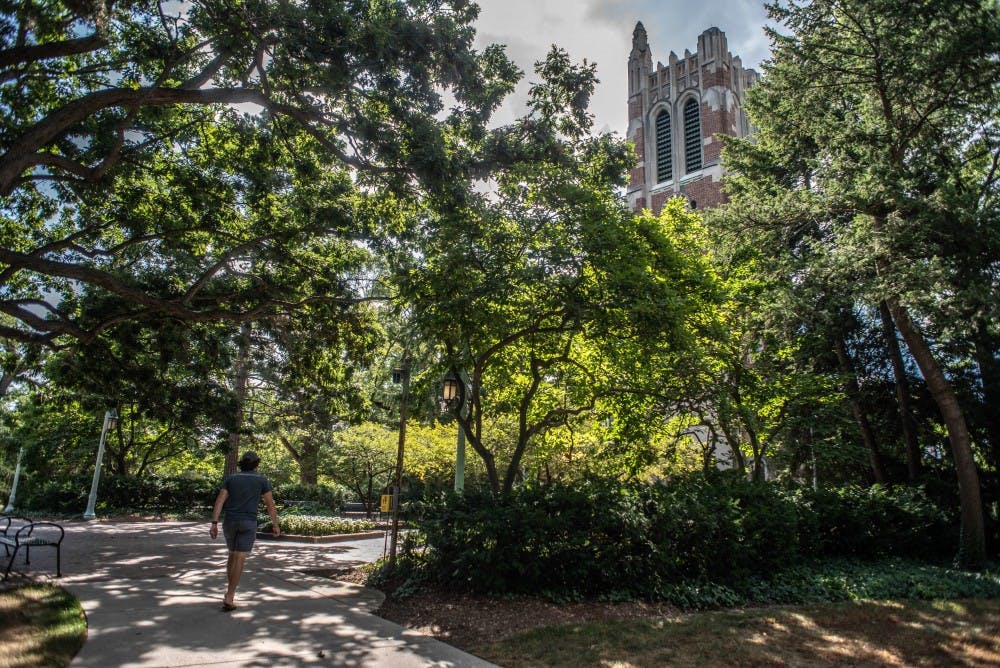A team of Michigan State researchers discovered a connection between the rare disease tuberous sclerosis complex, or TSC, and autism and epilepsy.
The correlation connects the three disorders to the mutation of two different genes that result in the restraint of proteins that are related to multiple disorders with high rates of autism.
WHAT IS TUBEROUS SCLEROSIS COMPLEX?
TSC affects multiple organ systems, causing benign tumors to grow on the skin, heart, kidneys and lungs.
It was known prior that there were high rates of people with TSC also having autism and seizures, but the study — published in Nature Communications — focuses on mutations in two specific genes that are critical to the pathway that retrains a protein often correlated with high rates of autism.
Around 90% of all people with TSC have seizures and about half have autism spectrum disorder.
When the two genes mutate, they turn off the protein mammalian target of rapamycin, or mTOR. When the mutation results in mTOR activating at the wrong times, people develop autism.
mTOR regulates the development and function of brain cells, and understanding how the protein works is crucial in understanding its role in the development in autism and neuropsychiatric symptoms of TSC because the study proved how crucial the protein is in the pathway.
HOW THE RESEARCH CAME ABOUT
The team made the breakthrough when they were working with inhibitory neurons in the brain and their properties. Inhibitory neurons release the neurotransmitter gamma aminobutyric acid, or GABA, whereas excitatory neurons release the neurotransmitters epinephrine and norepinephrine.
“That was kind of a shock, we didn’t really expect that at all,” author and assistant professor in the College of Human Medicine’s Department of Pediatrics and Human Development Daniel Vogt said. “For the field, it was kind of a big deal because we have been trying to understand what gives these inhibitory cells their properties to begin with.”
In many humans and animals on the autism spectrum, the group of cells that the research team was working with took on properties of other cells. The group of cells for people with autism are usually altered, Vogt said.
“We had a cell type that just kind of turned on properties in an unexpected way,” Vogt said. “Correlating with that, we also had the inhibitory neurons that we affected were less excitable. In other words, the brain itself had less inhibition which we think might also contribute to seizures in this disorder.”
The researchers followed a pathway of genes that worked similarly to an assembly line — if something along the line is faulty, people can develop diseases and disorders.
“It’s been known for a long time that there are several — probably 10 to 20 — different genes in this pathway that cause various syndromes with high rates of autism, but no one has really figured out what’s the commonality between these different genes,” Vogt said. “In other words, how can you have high rates of autism, but all these disorders are different?”
THE PROCESS
To save time and money, the researchers worked with the same cell tissue and labeled different proteins with different colors.
They expected an expansion of cells, but they did not expect any overlap. After removing some of the genes from the pathway, two proteins overlapped and became the same cell type.
Once they were done with that part of the experiment, they had collaborators who were “blind” — or unaware of what happened during experimentation — look at the results and confirm what they had seen.
“We always doubt ourselves immensely because we’re so used to failure basically,” Vogt said. “That was really the moment, when they came back without knowing anything and said, ‘Yes, these cells are very different, and they have properties of some other cell type in the brain that we were not expecting.’”
Support student media!
Please consider donating to The State News and help fund the future of journalism.
WHAT HAPPENS NEXT
Now, the team plans to work with the Helen DeVos Children’s Hospital because they have a TSC clinic. They plan to take one or two years to screen different mutations to see if the findings the team had in the lab were consistent with humans while also learning different things about the gene and its pathway.
While they will not work directly on or with people, the team will share their knowledge about the mutation and what it does.
“We hope that if we can understand enough about the gene and the mutation that we can start working with them in the future,” Vogt said. “This would be the ultimate hope, that we might be able to predict if a certain mutation might make you more susceptible to autism or seizures.”
“We want to understand if certain mutations cause problems in the gene that might lead to autism, or if they only lead to other symptoms of the disorder,” he said.
Discussion
Share and discuss “MSU Researchers discover disease, autism link” on social media.


